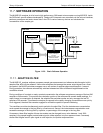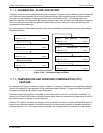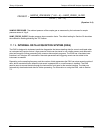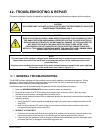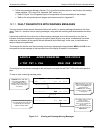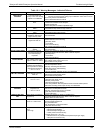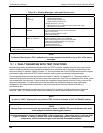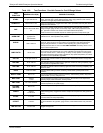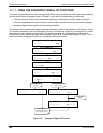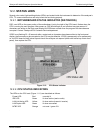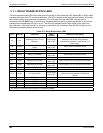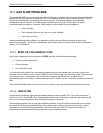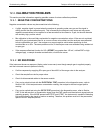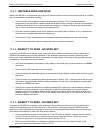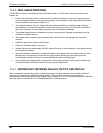
Troubleshooting & Repair Teledyne API M100E Analyzer Operation Manual
260
12.1.3. USING THE DIAGNOSTIC SIGNAL I/O FUNCTIONS
The signal I/O parameters found under the diagnostics (DIAG) menu combined with a thorough understanding of
the instrument’s theory of operation (refer to Chapter 11) are useful for troubleshooting in three ways:
The technici
an can view the raw, unprocessed signal level of the analyzer’s critical inputs and outputs.
All of the components and functions that are normally under instrument control can be manually changed.
Analog and digital output signals can be manually controlled.
This allows a user to systematically observe the effect of these functions on the operation of the analyzer. Figure
12-2 sho
ws an example of how to use the signal I/O menu to view the raw voltage of an input signal or to control
the state of an output voltage or control signal. The specific parameter will vary depending on the situation.
Please note that the analyzer will freeze its concentration output while in the diagnostic signal I/O menu. This is
because manually changing I/O outputs can invalidate the instrument reading.
Toggles parameter
ON/OFF
Exit returns to
DIAG display & all values
return to software control
DIAG SIGNAL I/O
PREV NEXT ENTR EXIT
DIAG I/O 0 ) EXT_ZERO_CAL=ON
PREV NEXT JUMP PRNT EXIT
DIAG I/O 19) REACTION CELL_HEATER=ON
PREV NEXT JUMP ON PRNT EXIT
DIAG I/O 29) PMT_TEMP=378.3 MV
PREV NEXT JUMP PRNT EXIT
DIAG I/O 19 ) REACTION CELL_HEATER=OFF
PREV NEXT JUMP OFF PRNT EXIT
If parameter is an
input signal
If parameter is an output
signal or control
SETUP X.X SECONDARY SETUP MENU
COMM VARS DIAG EXIT
SAMPLE ENTER SETUP PASS : 818
8 1 8 ENTR EXIT
SETUP X.X
PRIMARY SETUP MENU
CFG DAS RNGE PASS CLK MORE EXIT
SAMPLE RANGE = 500.000 PPB SO2 =XXX.X
< TST TST > CAL SETUP
Figure 12-2: Example of Signal I/O Function
04515F DCN6048



